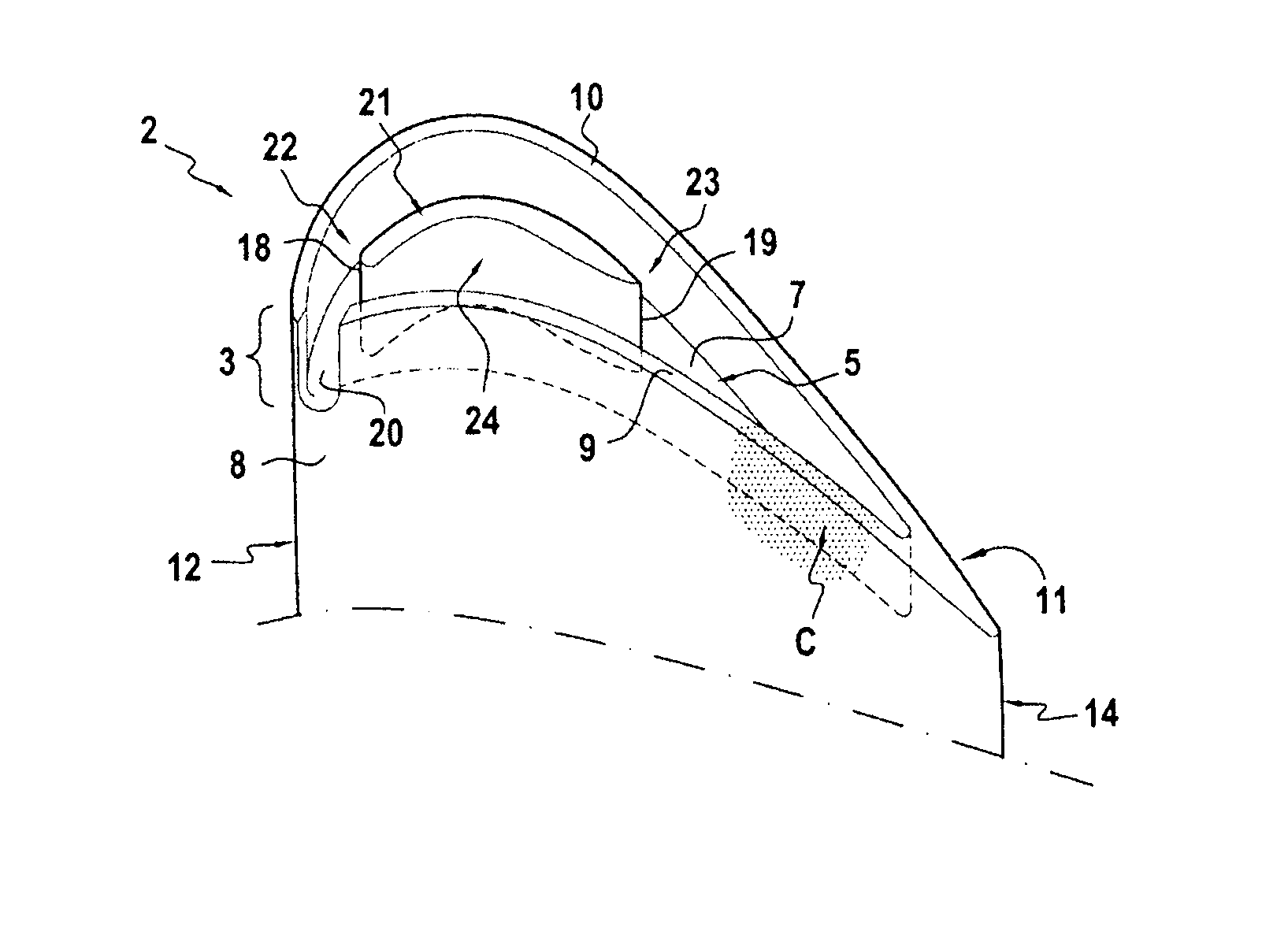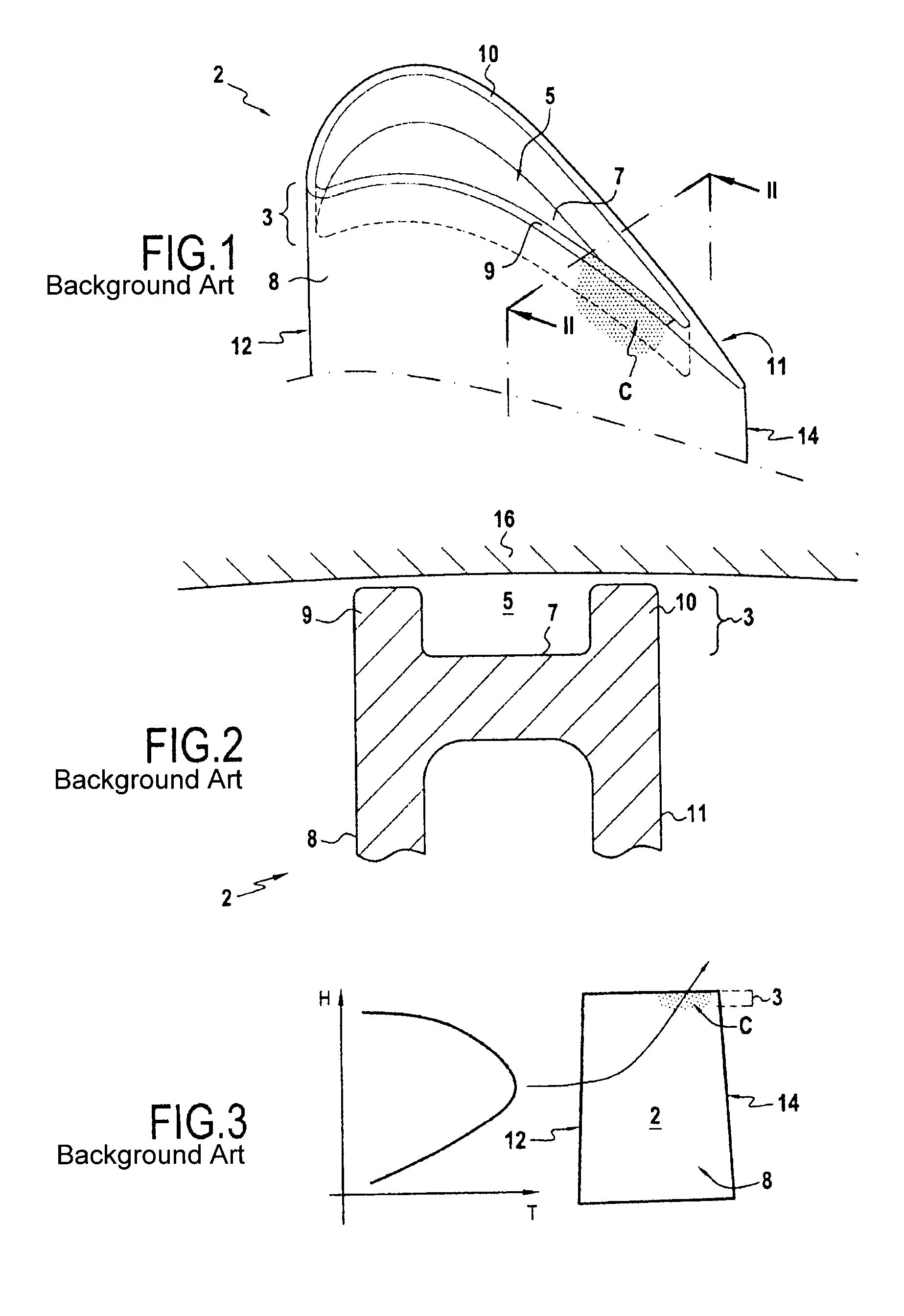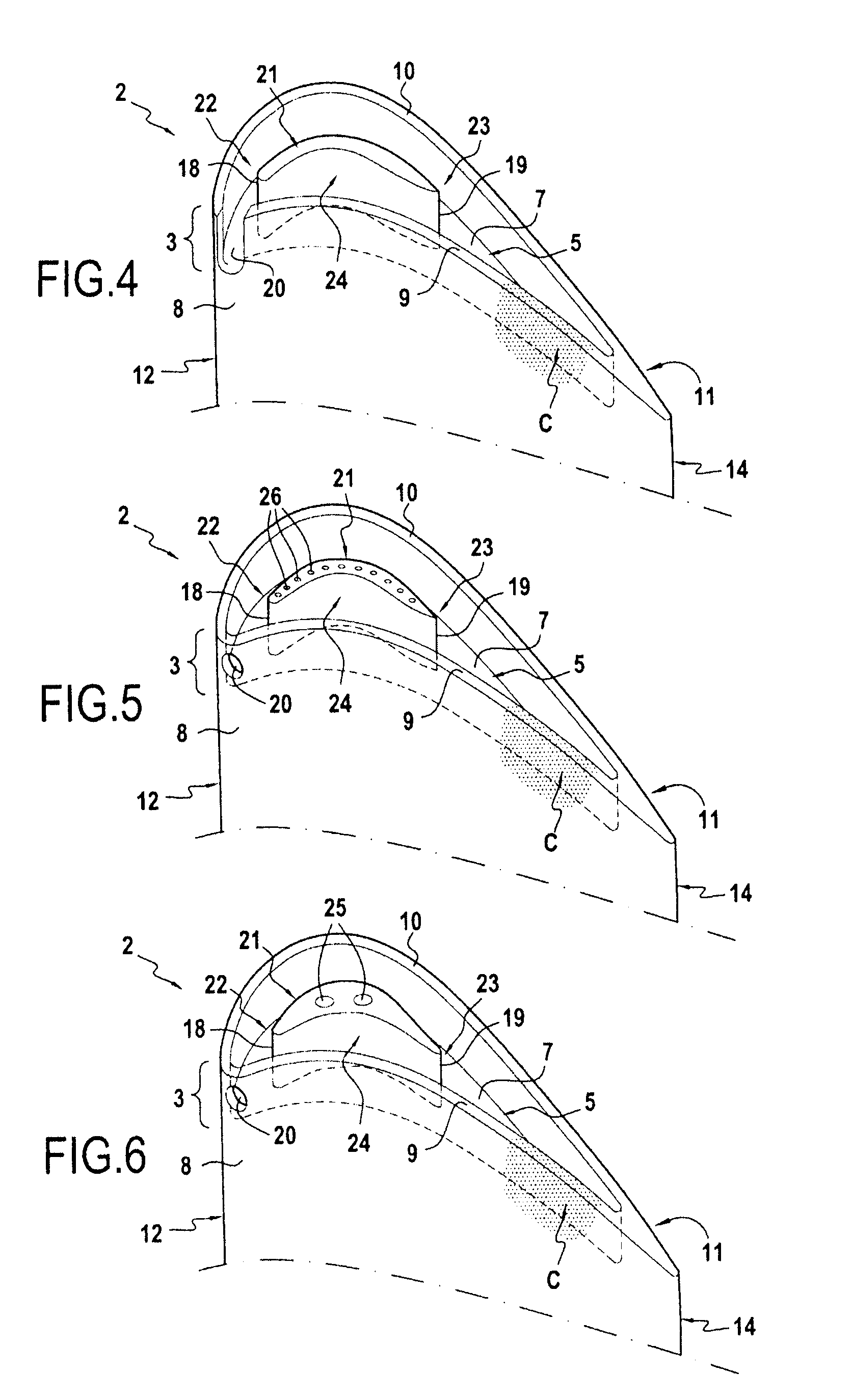Cooling of the tip of a blade
- Summary
- Abstract
- Description
- Claims
- Application Information
AI Technical Summary
Benefits of technology
Problems solved by technology
Method used
Image
Examples
first embodiment
[0018]the invention is described in reference to FIG. 4. In this embodiment, the opening 20 of the side wall 9, 10 of the cavity 5 is situated in the vicinity of the leading edge 12 of the blade 2, on the lower surface side 8. Without being restrictive, this opening position 20 makes it possible to withdraw the cooling gases (i.e. essentially less hot) in the outer portion of the vein of the gases particularly effectively. Of course, depending on the geometry of the blade and the angle of incidence of the gases, the opening 20 may be placed further downstream on the lower rim 9 or on the other side on the upper rim 10.
[0019]In this example, the opening 20 of the side wall 9, 10 of the cavity 5 is a recess. The height of this recess can vary according to different embodiments. Here, the recess extends over the entire height of the side wall 9, 10 of the cavity 5. This recess height has the advantage, for a given width, of providing the cavity with a maximum gas flow.
[0020]In this fir...
second embodiment
[0024]the invention is described in reference to FIG. 5. In this example, the opening 20 of the side wall 9, 10 of the cavity 5 is a hole. The cylindrical shape of the hole illustrated in this example is not limiting. The hole can have an oblong or triangular shape, among others. As side wall opening of the cavity 5, the hole has the advantage of being able to precisely adjust the flow of cooling gas entering the cavity 5.
[0025]This second example illustrates a hollow blade 2 supplied with cooling gas, and the deflector 21 includes cooling holes 26 communicating with at least one hollow portion of the blade. These cooling holes are radial bores in the deflector 21. They open into an inner cavity of the blade 2 situated under the deflector 21. The cooling of the deflector 21 is thus ensured by pumping and heat conduction. Moreover, the cooling of the deflector 21 makes it possible to lower, by convection, the temperature of the gases deviated by the latter, consequently increasing th...
third embodiment
[0026]the invention is described in reference to FIG. 6. This third example shows a hollow blade 2 supplied with cooling gas, and the deflector 21 includes dust extraction holes 25 communicating with at least one hollow portion of the blade. These dust extraction holes are similar to the cooling holes and ensure, like the latter, the cooling of the cavity 5. However, they have a larger diameter than that of the traditional cooling holes. The larger diameter of the dust extraction holes allows the evacuation of dust that may be present in the inner cavity(ies) of the blade. Thus, on a deflector having both types of holes, the dust will preferably pass through the dust extraction holes rather than through the narrower cooling holes. One therefore avoids covering the cooling holes of small diameter.
[0027]Because of the significant diameter of these dust extraction holes, it is necessary for the deflector 21 to have a greater thickness than in the preceding examples.
PUM
 Login to View More
Login to View More Abstract
Description
Claims
Application Information
 Login to View More
Login to View More - R&D
- Intellectual Property
- Life Sciences
- Materials
- Tech Scout
- Unparalleled Data Quality
- Higher Quality Content
- 60% Fewer Hallucinations
Browse by: Latest US Patents, China's latest patents, Technical Efficacy Thesaurus, Application Domain, Technology Topic, Popular Technical Reports.
© 2025 PatSnap. All rights reserved.Legal|Privacy policy|Modern Slavery Act Transparency Statement|Sitemap|About US| Contact US: help@patsnap.com



